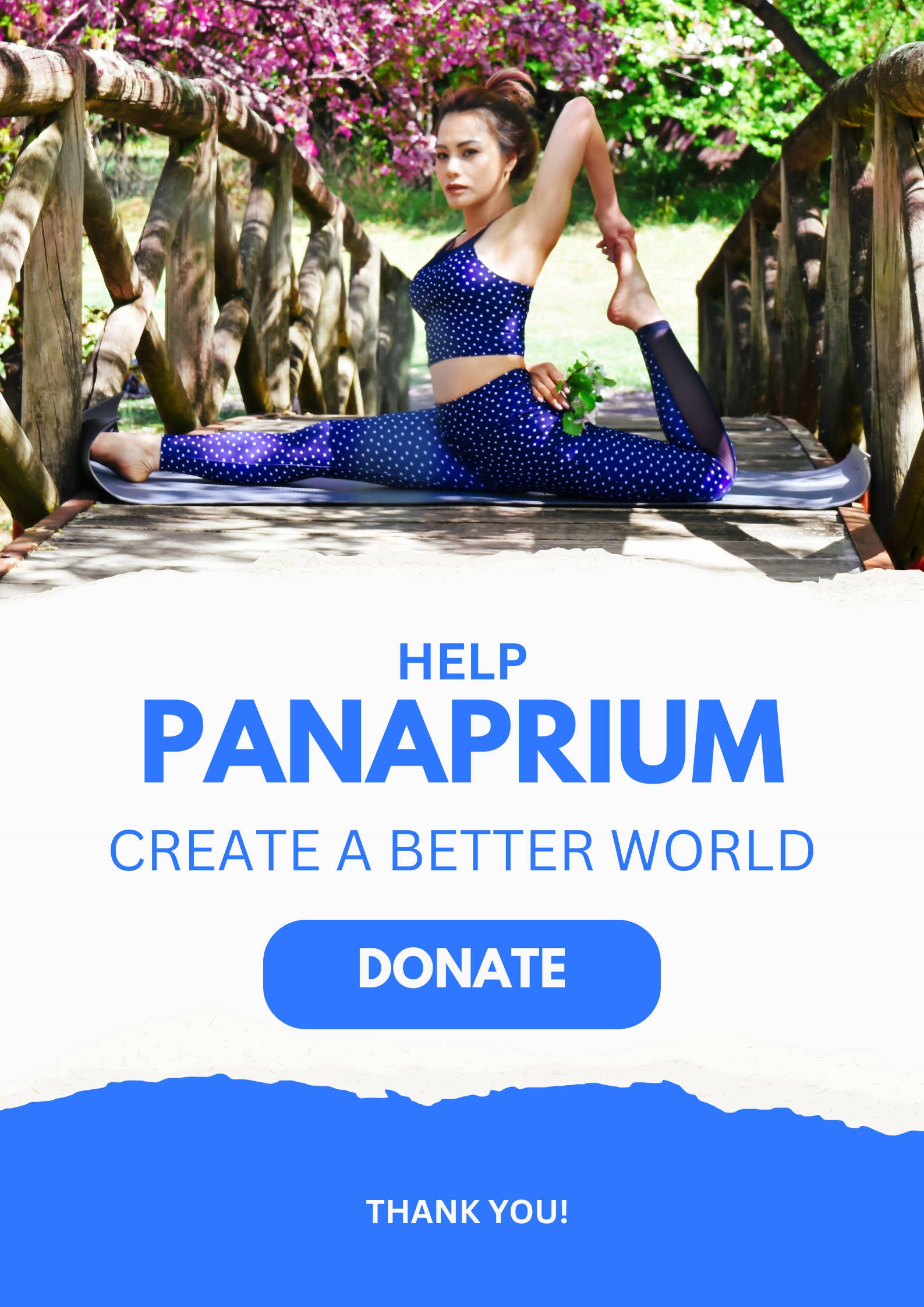
Did you know that your wardrobe has a huge social and environmental impact? Every clothing purchase decision you make influence the lives of people, animals, and ecosystems on the planet.
The fashion industry has a catastrophic contribution to climate change. It's responsible for more than 8% of all carbon emissions globally each year. The apparel and textile industry is still growing and its CO2 emissions will increase by 50% by 2030.
The dresses, shirts, undergarments, and accessories you own affects the environment. Not only with greenhouse gas emissions, but also with water and energy consumption, textile waste, hazardous chemicals, and microfiber pollution.
The fashion industry is one of the largest polluters globally. It's a major contributor to climate change. Here are the facts.
Panaprium is independent and reader supported. If you buy something through our link, we may earn a commission. If you can, please support us on a monthly basis. It takes less than a minute to set up, and you will be making a big impact every single month. Thank you!
The fashion industry emits 8% of all CO2
The global apparel and footwear industry accounts for 8% of the world’s carbon emissions, almost as much as the total for the whole of Europe, as reported by the 2019 Fashion Transparency Index.
The Ellen MacArthur Foundation estimated in 2017 that the global fashion industry emits 1.2 billion tons of greenhouse gases each year, which is more than all international flights and maritime shipping combined.
The fashion industry’s greenhouse gas emissions will grow more than 50% by 2030 if the trend continues, increasing the contribution to climate change massively.
To make animal-derived products such as wool, leather, fur, silk, and down, intensive farming creates lots of methane, very potent greenhouse gases and by-products of animals' digestion.
Over 20 years, one kilogram of methane warms the planet as much as 80 times more than one kilogram of carbon dioxide, according to the United States Environmental Protection Agency.
And 80% of global deforestation is a result of agricultural production, as reported by Greenpeace. Animal agriculture, livestock and animal feed are a significant driver of deforestation and are also responsible for approximately 60% of direct global greenhouse gas emissions.
As reported by the American Apparel Association in 2017, if you decide to buy second-hand clothing instead of new clothes, you can prevent more than 500 pounds of carbon emissions every year.
Learn more about the environmental benefits of buying second-hand clothing in my other article.
More than 80% of all clothing produced ends up in landfills to decompose or be incinerated globally, as reported by the Global Fashion Agenda.
During decomposition or when burning, clothing emits large quantities of carbon and toxic gases into the Earth's atmosphere, contributing massively to pollution and global warming.
Why do large fashion brands and retailers make so little effort to reduce textile waste? Why are there so few regenerative and circular systems in place in the fashion industry?

Fashion generates 16.9 million tons of waste in the U.S.
The apparel and textile industry is one of the largest polluters in the world. More than 16.9 million tons of used textile waste is generated every year in the United States, as reported by the Environmental Protection Agency.
The fashion industry is responsible for textile waste piling up at a catastrophic rate. The average American throws away 70 pounds of clothing and other textiles each year.
Less than 1% of all used textile waste is recycled to make new clothes, as reported by the Ellen MacArthur Foundation. It estimated in 2017 that USD 500 billion is lost each year due to our overconsumption habits and throwaway culture.
This amount of waste is close to 10 times bigger than in 1960 and doubled over the last 20 years.
Only 15.2% of all textile was recycled in the U.S. in 2017, as estimated by the Environmental Protection Agency. The large majority of textiles (14.3 million tons) wasn't recycled, donated, sold, or up-cycled, but ended up in landfills to decompose or be incinerated.
If the fashion industry successfully solves its environmental and social issues by 2030, the overall benefit to the world economy would be about USD 192 billion (EUR 160 billion), as estimated by the Pulse of the Fashion Industry report.

The disastrous social and environmental impact of fashion
The Ellen MacArthur Foundation reported in 2017 than all textile production worldwide, including cotton farming, uses almost 100 billion cubic meters of water annually. This would be enough to meet the needs of five million people.
The fashion industry produces 17-20% of all wastewater worldwide, according to the World Bank. Industrial water pollution comes from fabric manufacturing processes such as washing, bleaching, dyeing, and treatment.
According to the fourth World Water Development Report, presently only 20% of globally produced wastewater receives proper treatment (UNESCO, 2012).
The reuse and recycling of over 100,000 tons of used textiles can save up to 70 million cubic meters of water by negating the production of new textiles and materials, as reported by the Nordic Council of Ministers in 2016.
Cotton requires tons of chemicals to grow (up to 3 kilograms of chemicals for 1 kilogram of raw material). Cotton farming consumes 4% of worldwide of nitrogen and phosphorous fertilizers, 16% of all insecticides, and 7% of all herbicides, as reported by the Global Fashion Agenda.
Every year a half a million tons of plastic microfibers are dumped into the ocean, the equivalent of 50 billion plastic bottles. And about 60% of synthetic fabrics are made of fossil fuels.
The fashion industry employs 300 million people around the world and many of them in the poorest countries.
The demand for quickly and cheaply produced clothing caused the catastrophic Dhaka garment factory fire in 2012 and the 2013 Rana Plaza factory collapse in Bangladesh. Combined, these events killed over 1,200 factory workers and injured over 2,700.

Reducing the environmental impact of your clothes
Check out the Fashion Footprint Calculator. It's a great way to determine how much you are contributing to climate change with your closet.
If you want to reduce the impact of your clothing purchases, there are a few things you can do:
- Donate, sell, recycle or up-cycle what you don't wear
- Take better care of the clothes in your closet
- Repair as much as you can
- Buy from second-hand shops
- Subscribe to a clothing rental
- Investigate the brands before buying from them
- Learn the materials and certifications to look for
- Buy the essentials for your wardrobe
- Buy fewer clothes overall
- Buy sustainable and ethical fashion
- Buy what you need and not trends
- Buy clothes that fit your lifestyle
- Buy durable and high-quality pieces
Read up my article on how to quit fast fashion for more information on transitioning to sustainable fashion.
The fashion industry has a catastrophic impact on the environment and contributes massively to climate change.
The overproduction and overconsumption of textiles, apparel, footwear, and accessories aren't sustainable.
We have to rethink completely how we produce and consume clothes to prevent irreversible damage to people, animals, and the planet.
Buying less and higher quality is a great way to change the wasteful fashion industry into a more eco-responsible industry. Support and buy from companies that make huge efforts to minimize their social and environmental impact.
If you don't know where to start, check out my ultimate guide on how to tell if a fashion brand is ethical.
Do you know some great places to buy sustainable fashion?
Was this article helpful to you? Please tell us what you liked or didn't like in the comments below.
About the Author: Alex Assoune
What We're Up Against
Multinational corporations overproducing cheap products in the poorest countries.
Huge factories with sweatshop-like conditions underpaying workers.
Media conglomerates promoting unethical, unsustainable products.
Bad actors encouraging overconsumption through oblivious behavior.
- - - -
Thankfully, we've got our supporters, including you.
Panaprium is funded by readers like you who want to join us in our mission to make the world entirely sustainable.
If you can, please support us on a monthly basis. It takes less than a minute to set up, and you will be making a big impact every single month. Thank you.































0 comments